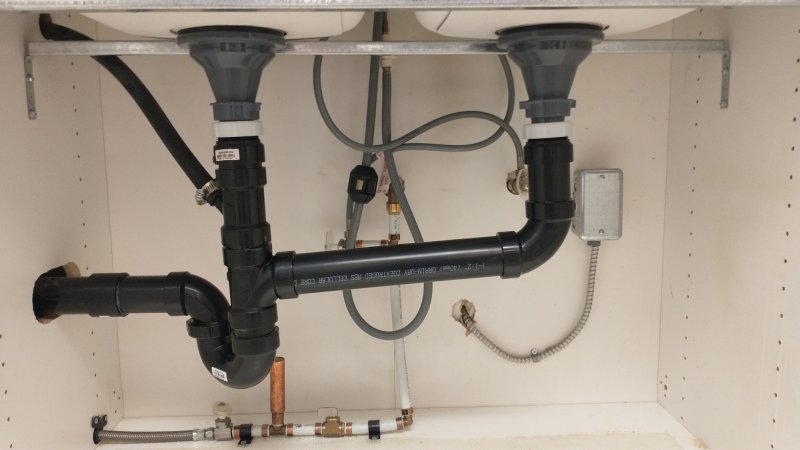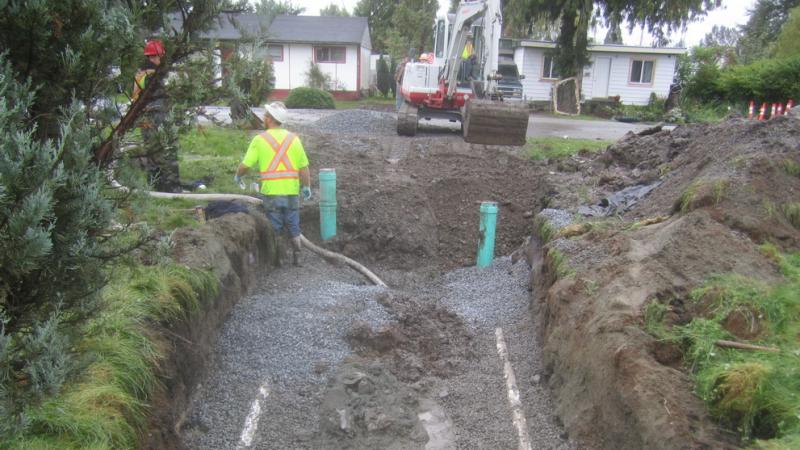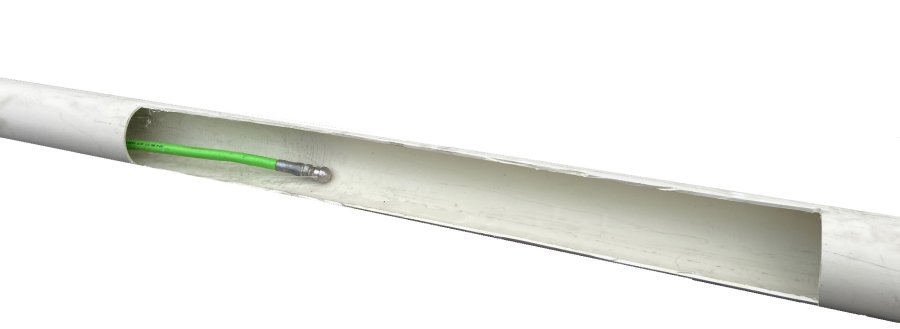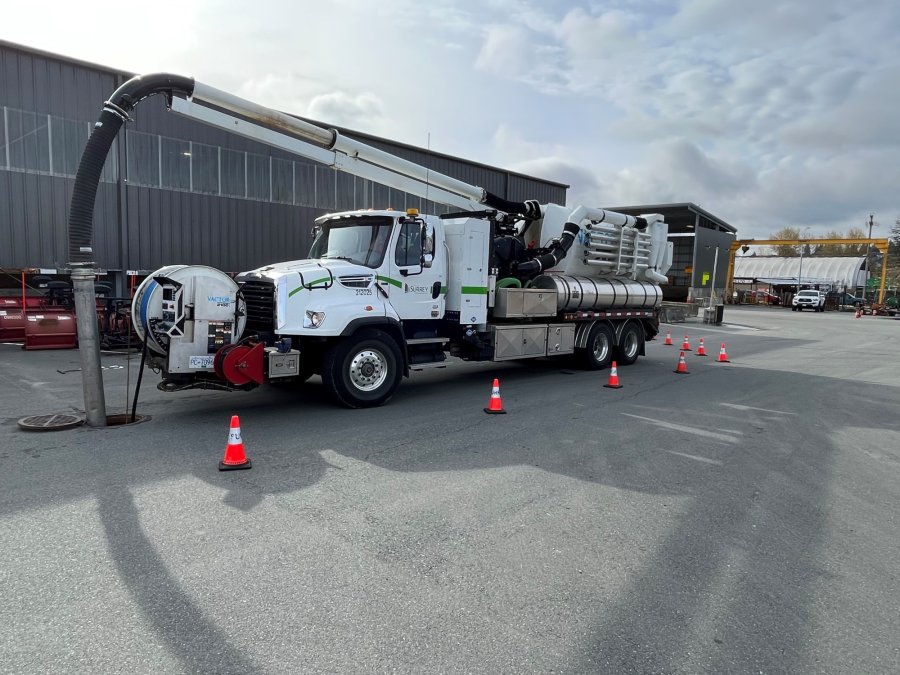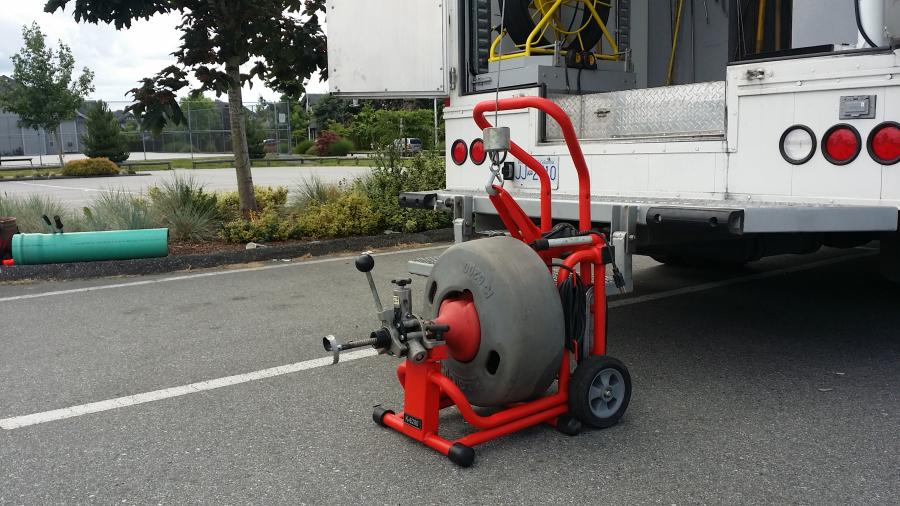Sanitary Sewer Services
We build and maintain Surrey’s sanitary sewer system, one of the largest in the province. Learn how to connect to the City’s sewer system and how to keep your sewer pipes working properly.
Sanitary sewer relining
Surrey has many old sanitary sewers located in the backyards or sides of homes, within City right-of-ways.
We are going to extend the useful life of these aging sewer pipes so they can continue to provide reliable service until redevelopment of property— which could be decades away for some areas.
Learn about how we plan to make these aging sewers last longer with an innovative technique.
How our wastewater system works
Wastewater (or sewerage) includes used water from homes, toilets, showers, laundry, dishes and sinks, as well as water from non-household sources for industrial use. It is not the same as stormwater, which is a separate system.
Wastewater flows from your building through a service lateral pipe. It passes an inspection chamber and out to a main—a large pipe to convey wastewater to larger mains and pump stations. From there, our wastewater system is connected to several regional trunk mains owned and operated by Metro Vancouver.
Surrey has one of the largest wastewater systems in the province, with over 1700km of sanitary sewer pipes and 44 sewer lift stations and growing.
Surrey is part of a regional system
These regional trunk mains carry wastewater to the Annacis Island Wastewater Treatment Plant as part of the regional wastewater treatment system. The facility uses separators, screens, ultraviolet light and bioorganic chemicals to remove solids and sludge before it goes back into the environment.
Bylaws and authority for wastewater
There are municipal and regional bylaws which dictate the installation, use, maintenance and enforcement of wastewater systems. The City of Surrey’s Sanitary Sewer Bylaw No. 16611 lists the roles and responsibilities for both property owner and the City.
Broadly, sanitary wastewater sewerage systems fall under the authority and jurisdiction of the BC Ministry of Health.
Waste discharge permits
Discharge of non-domestic wastewater requires a waste discharge permit application from Metro Vancouver as well as approval by the City. This includes businesses that may be deemed to be heavy water users such as industrial use and food establishments.
Maintaining Surrey's sewer system
We regularly inspect Surrey's sanitary sewer system to ensure that it:
- Has no blockages and is working properly
- Is not broken or collapsed at any locations
- Is reducing the risk of rainwater and groundwater entering the sanitary sewer system




Our inspection and maintenance work includes:
Video inspections
- A camera records a video as it travels through a sanitary sewer
- City staff review the video and identify issues in the sewer, such as cracks, leaks, blockages, sags, roots, fats, oils and grease deposits, or breaks in the pipe
- New sanitary sewers are also video inspected to confirm that the pipes meet City standards
Smoke testing
- A non-toxic vapour (that looks like smoke) is added to the sanitary sewer and pushed through the system using forced air
- If the smoke comes out of a roof downspout or storm sewer cleanout on a house or building, then there is a possible cross connection (meaning rainwater or groundwater can enter the sanitary sewer system)
- Cross connections are a violation of the City’s Sanitary Sewer Bylaw No. 16611 and should be fixed by the property owner immediately
- Smoke testing can also identify broken or missing lids or caps on inspection chambers and manholes
Flushing
- Pressurized water is injected into a sanitary sewer to move debris that is stuck or restricting flow
- The debris is removed by a vacuum truck at a downstream manhole
Pressure testing
- A small section of the sanitary sewer is isolated using “bladders” and air is added to the isolated section to pressurize the pipe
- A gauge then displays the air pressure in the isolated section over time
- A drop in air pressure indicates that there is a leak or crack in the pipe
- A gel-like substance (called grout) can be injected to seal off the leak or crack in the pipe
Fat, oil and grease removal
- A circular rotating saw is sent through the sanitary sewer to cut and remove hardened deposits that have attached to the pipe
Root cutting
- A circular rotating saw is sent through the sanitary sewer to cut tree and vegetation roots that have entered the sanitary sewer through cracks or joints in the pipe
- Sometimes cutting the roots actually makes the root system grow faster (pruning effect), so property owners are notified not to plant trees, shrubs or other large plants over sanitary sewer pipes
Dye testing
- A coloured, non-toxic liquid or tablet is added to the storm sewer plumbing/infrastructure via a roof downspout or building foundation drain cleanout
- If the dye appears in the sanitary sewer, then there is a cross connection
- Similarly, if dye is added to sanitary sewer plumbing in a house or building and the dye appears in the storm sewer, this is also a cross connection
- Cross connections must be fixed by the property owner immediately per the City’s Sanitary Sewer Bylaw No. 16611 and Stormwater Drainage Bylaw No. 16610
